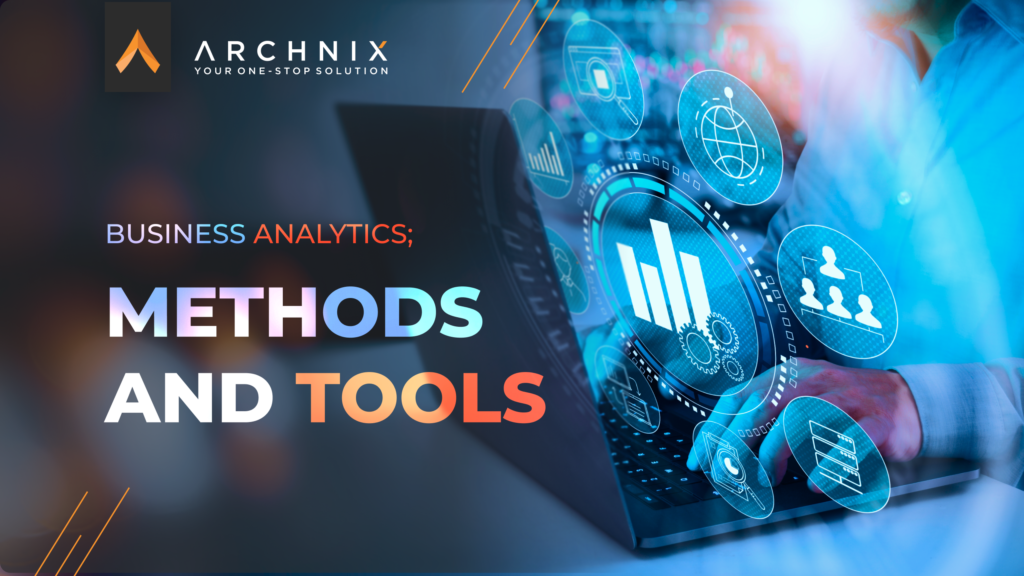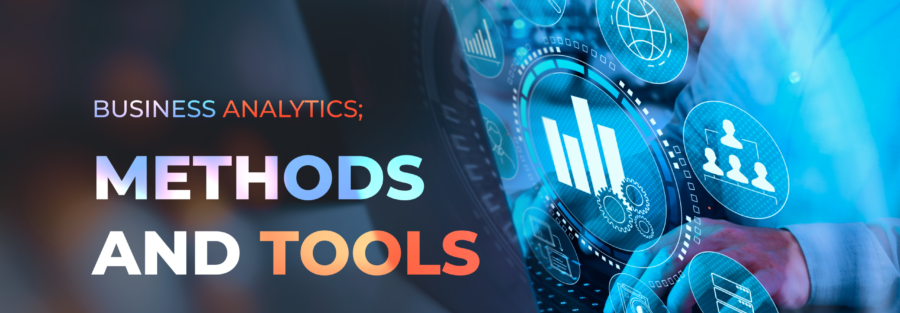
What is Business Analytics?
Business analytics is the use of data analysis to make decisions for the organization’s future. Data plays a major role in every business. Gathering data isn’t enough. You need to analyze data. Analyzing data is a sensitive process that has to be done properly. That’s where we seek the help of business analytic tools. This software is specifically designed to help businesses to use in gathering data, processing information, and predicting future actions.
Data-driven decision-making has become the most effective way of operating a business. This can be applied in every single operation. For example, a business can use the data gathered through social media to understand the type of potential clients and their behavioral patterns and the best trends that the business could adopt to get more attention. This can directly tell you what you should plan for your next social media campaign. When a business grows, it needs to acquire more proficient business information and needs to use reliable analytic tools for predictions. Huge corporations invest in analytics largely as they rely on the decisions made over the information collected through business analytics.
Four main types of Analysis
Descriptive Analytics
This is simply the analysis type of looking at past information and current information to forecast future trends. As it is expressed in the title itself, descriptive analytics provide a detailed analysis of a large number of data gathered in a statistical manner using charts or graphs. This is consisting of two parts. The first is data aggregation which represents the data gathering and the presenting part. The second is data mining which is the exploring part of future trends. Due to the analytic tools that we are using today most of the time data analysts have got the opportunity in reducing their workload of data aggregation which is now done through software and their responsibilities have moved towards mining or the exploring area.
Diagnostics Analytics
As it is expressed in its title itself, diagnostic analytics help diagnoses problems. But it is not only used in problem-solving but in many other occasions to figure out the reasons why it happened in a business scenario. This is the type of analysis that digs down to a root cause of a problem or a specific result. This is very useful in case of an anomaly. It is important for a business to know the reasons behind a failure to fix it as well as it is useful to know the reasons behind any success to focus more on it to improve. Diagnostic analytics can include different techniques such as probability theory, filtering, regression analysis, and time-series analysis.
Predictive Analytics
Predictive analytics help businesses to predict what will happen in the future. It can be predicted in different aspects of the business. For a common example, a business can predict its future sales depending on the past data collection of sales. By looking at its improvement over the years, customer behaviours and by looking into other relevant information a business can predict the future which enables the business to prepare in advance either to take advantage of future opportunities or to reduce the damage that could occur due to future negative impacts. Predictive analytics uses two or more variables to give future predictions. It is also good to keep in mind that predictions are not 100% reliable so you better need to have backup plans in case any predictions go wrong.
Prescriptive Analytics
Prescriptive analytics simply prescribes future actions. This is one of the most complicated analyses compared to the other three described above. This involves algorithms, machine learning, statistical methods, and computational modeling procedures. The prescriptive analysis looks back on the company’s actions and looks at current actions and takes into consideration future predictions and prescribes the best course of action to be taken in the future.
Let’s look at some competitive analytic tools available in the market
Here are three main analytic tools that are feasible to adopt by any size of business. If you are new to business analytical tools you may get started by trying out these at first.
MS Excel
This is the very basic level of gathering data processing and presenting. Everybody has already used MS Excel or at least Google spreadsheets. Excel provides a simple and basic data representation option where data analysts can make use of in the primary stage of analytics. This should be the primary point of getting off the ground of business analytics. It has a variety of options for presenting visual graphs and charts.
Google Analytics
This is a free platform giving every business a chance to take the business a few steps ahead. It has a wide range of options to track relevant data from ongoing businesses and systems to process data into insights. This helps a lot with marketing while giving out real-time data. Since it is connected to the website, it tracks every single detail such as the number of site visitors and their patterns of visiting your site. These records are later transferred into proper insights and presented statistically.
EmailAnalytics
This is specifically made for Gmail. Emails are one of the main sources of business activities. On a daily basis, you may send thousands of emails out for different purposes such as marketing and other business needs. These can be tracked and turned into meaningful insights for future use. Using EmailAnalytics you can integrate the employee Gmail in order to get a clear picture of the business function from an email perspective. This will help you to track many email-related aspects such as average response time.
Let’s look at some competitive analytic tools available in the market
If you are a person running your business at an average and already have an idea about business analytics you may take your second step in putting efforts to get a little competitive in the game.
Power BI
Power BI is a great example of data visualization tool. This is an addition to Microsoft Analytics as it is developed by Microsoft. This includes a higher capability with a simple but modest interface to run efficiently. Power BI is supported with desktop, mobile and online versions where the application is readily available in any format for users. At the same time, it enables to share reports with any relevant person easily, where the information can be used then and there.
QlikView
QlickView is a user-friendly business analytic tool with better flexibility. This is well recognized for its speed and advanced technology. It has a sophisticated data visualization ability and a better user interface.
Tableau Big Data Analytics
Tableau is famous among many because of its ability to analyze unstructured text. It enables users to process a large number of data easily and turn them into meaningful information with advanced statistical data representations. It has the ability to provide an in-depth analysis of data. Tableau Big Data supports Google Analytics, Big Query, and Google AdWords and through them, it is able to provide comprehensive web analytics.
SAAS
This is known to be one of the best analytic software in correlation forecasting. SAAS can convert unstructured data into meaningful insights. It helps to interpret complex data statistically. SAAS comprehends an advanced data visualization ability. Also, this is very famous as it was one of the very beginners in the data analytic industry.






14 Comments
gratis binance-konto
Can you be more specific about the content of your article? After reading it, I still have some doubts. Hope you can help me.
Anonymous
Your point of view caught my eye and was very interesting. Thanks. I have a question for you.
registro na binance us
Thank you for your sharing. I am worried that I lack creative ideas. It is your article that makes me full of hope. Thank you. But, I have a question, can you help me?
Zarejestruj sie
Your article helped me a lot, is there any more related content? Thanks!
crear una cuenta en Binance
Can you be more specific about the content of your article? After reading it, I still have some doubts. Hope you can help me.
Anonymous
Thank you for your sharing. I am worried that I lack creative ideas. It is your article that makes me full of hope. Thank you. But, I have a question, can you help me?
🔰 Transaction 65 490 Dollars. Withdrаw > https://telegra.ph/BTC-Transaction--980736-03-14?hs=d330c0f9bcb5ed8fa0d7f94f05d8e245& 🔰
pue4hr
b"asta binance h"anvisningskod
I don’t think the title of your article matches the content lol. Just kidding, mainly because I had some doubts after reading the article.
binance prijava
Your article helped me a lot, is there any more related content? Thanks!
binance-
Thank you for your sharing. I am worried that I lack creative ideas. It is your article that makes me full of hope. Thank you. But, I have a question, can you help me?
M~a gii thiu binance tt nht
Your article helped me a lot, is there any more related content? Thanks!
^Inregistrare
Can you be more specific about the content of your article? After reading it, I still have some doubts. Hope you can help me.
📄 Withdrawing 76 823 US dollars. GЕТ => https://script.google.com/macros/s/AKfycbzVR2h668Nqk_aEfL396VGpekNCpWtWgrRRjQHUNwMzZz7Y_Dj8Mm1k6VTanlCqrSehLw/exec?hs=d330c0f9bcb5ed8fa0d7f94f05d8e245& 📄
gcvh7h
gate.io
I have read your article carefully and I agree with you very much. This has provided a great help for my thesis writing, and I will seriously improve it. However, I don’t know much about a certain place. Can you help me?